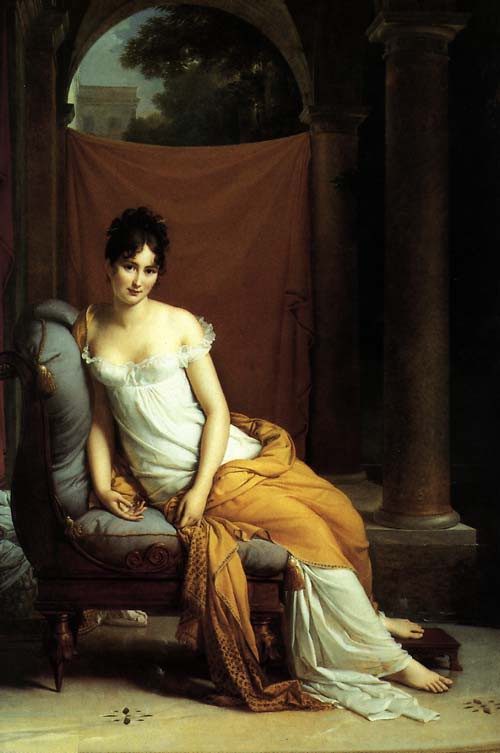In 1866, after his town planning projects had removed a section of the heart of Paris, Baron Haussmann decided to create a museum dedicated to the history of the capital. It was thus at his instigation that the city of Paris purchased the Carnavalet Hotel, a splendid building constructed in 1548 for Jacques de Ligneris, president of Parliament. The hotel, decorated with bas-reliefs attributed to Jean Goujon, was modified in the 17th century by Mansart and occupied by Madame de Sévigné between 1677 and 1696. In 1989, the Carnavalet Museum was extended to the neighbouring Le Peletier Hotel of Saint-Fargeau, a sober and majestic dwelling constructed in 1690 by Pierre Bullet.
Although the Carnavalet museum is above all a collection of Parisian material and as such does not deal directly with the Napoleonic epic, nevertheless since many of the transformations which the city underwent occurred during First and Second Empire, the Napoleon enthusiast is not short of interesting material. In the rooms 109 to 113 – dedicated to the Directoire period – there are items relating to the coup d'etat of 18th Brumaire (notably the proclamation of Bonaparte and some etchings), and a plaster bust of the young general by Corbet, a picturesque gouache entitled “Napoleon's Dream”, and a portrait by Gros of Méhul, the Emperor's favorite musician.
The Empire room (115) contains a few exceptional pieces, such as the emperor's personal campaign baggage made by Biennais and Odiot, a pair of horse pistols, his dress breast plate in engraved brass of which the main motif was designed by Vivant Denon, the dress arms of some of his greatest soldiers, and a cast of his death mask taken on Saint-Helena by Antommarchi.
The remainder of this room takes as its theme above all the non-military aspects of the Empire with some portraits and busts of its great men of the period: “The Emperor Napoleon” by Robert Lefevre, “Talleyrand” by Prud'hon and “Pius VIIth” by Deseine. The place of honour is however given to the most celebrated beauties of the epoch: “Madame Hamelin” by Appiani, “Mademoiselle Duchesnois” by Gérard, a famous actress shown here in the role of Dido, and above all “Madame Récamier”, in all of the splendour of her beauty, again by Gérard in a painting justly celebrated.
Other paintings take Parisian life and the transformation of the city as their subjects. One by Jacques Bertaux, a meticulous retracing of the coronation-day procession of Napoleon I as it crossed the Pont Neuf, 2nd December, 1804, shows clearly its position within the tradition of 18th century urban views. Another by Léopold Boilly represents the departure of draftees in front of the Saint-Denis gates. Two paintings by Etienne Bouchot record the Emperor's building programme, namely, the Châtelet Fountain (of which the original bronze victory statue executed by Boizot is today kept in the garden of the museum) and the Place Vendôme with the famous column erected to the glory of the Great Army.
Room 128 is dedicated to the Second Empire. The paintings here are of the imperial ceremonies: the inauguration of the 1855 World's Fair, the distribution of Aigles, the parade of the Crimean troups, the arrival of Queen Victoria at the Gare de l'Est, the soirée given at the Tuileries on 10th June, 1867, for the foreign sovereigns. The belles of the Empire period, Marguerite Bellanger, Céline Chaumont and the Duchess of Castiglione are portrayed in busts by Carrier-Belleuse. There is also an exceptional piece in the form of the Imperial Prince's state cradle offered by the city of Paris at the time of his birth in 1856. On a more serious note, the is a painting by the Italian artist, H. Vittori, of Orsini's assassination attempt against Napoleon IIIrd.
The other side of this room and the following Room 120 are taken up with paintings of the immense urban planning project brought about by Haussmann on the initiative of Napoleon IIIrd, notably, the famous prefect portrait by Lehmann, the delivery of the decree annexing the suburban communes in 1859, the digging of the avenue de l'Opéra, and the demolition of the old General Hospital.
Also of interest are a few pieces on the ground floor of the museum in a room reserved for Parisian shop signs. In a style reminiscent of popular art, there are signs for a wine merchant's shop, “The Evening Watch at Austerlitz” and for a tobacco merchant, “Tobacconist of the Great Conqueror”, both of which using the figure of Napoleon I.
K.H.
Carnavalet Museum


